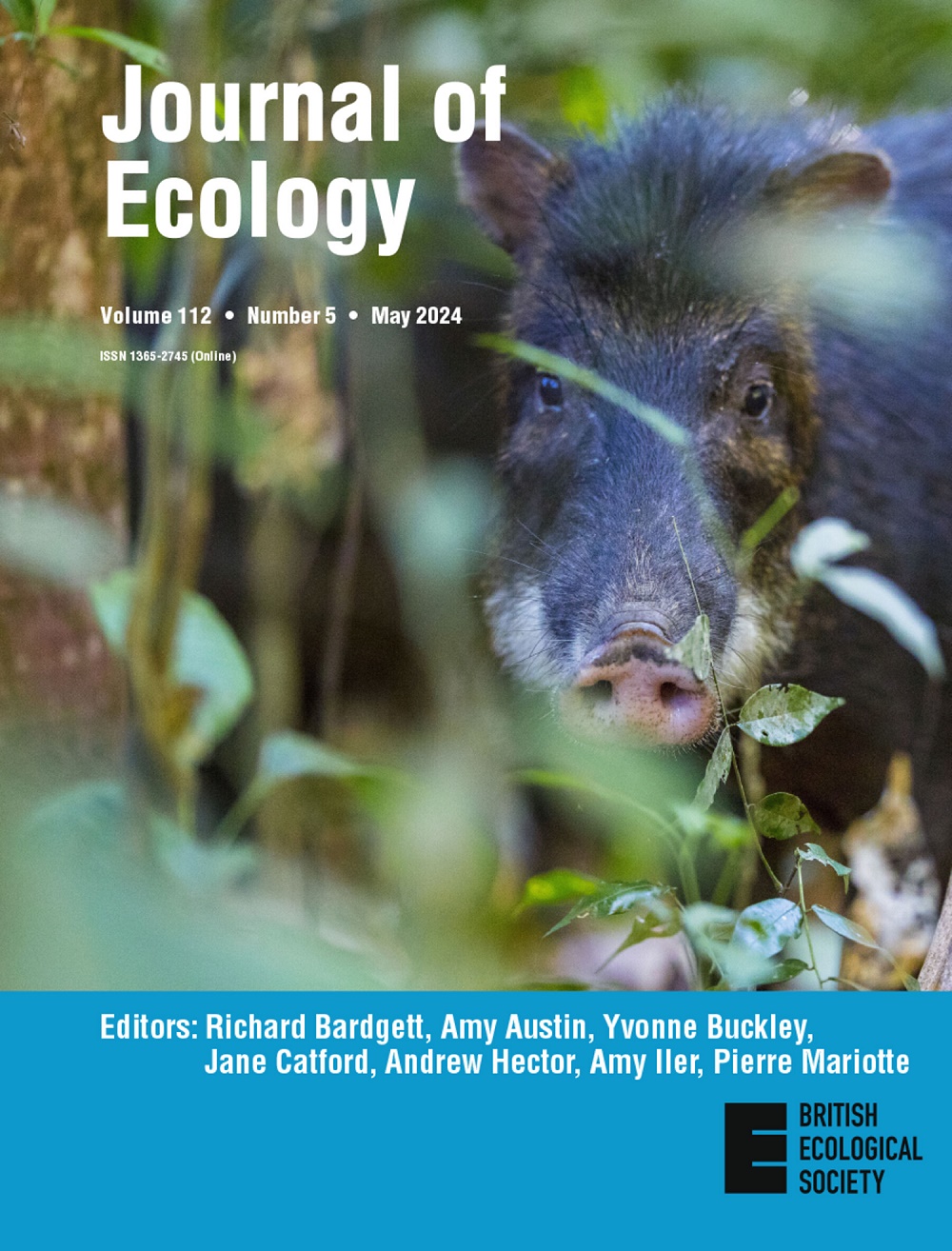Weed-suppressive ability and species dominance in intercropping: A meta-regression
IF 5.6
1区 环境科学与生态学
Q1 ECOLOGY
引用次数: 0
Abstract



间作杂草抑制能力和物种优势:meta -回归
在间作中,杂草生物量通常低于各自单作的平均值。最近的研究表明间作对杂草抑制的增强是一种选择效应,即更强的杂草抑制物种对总体抑制的贡献不成比例。除了提高对杂草的抑制作用外,它的优势也可能导致较弱的抑制物种被淘汰。然而,这一假设尚未得到验证。在这里,我们分析了47个报告年度双特异性间作和纯间作中杂草和作物数据的实验数据,以测试具有更强杂草抑制能力的物种在间作中是否优于其同伴。利用纯林分的杂草生物量来鉴定强(s)和弱(w)杂草抑制因子。计算了两种作物间作实现产量与预期产量的比值(即净效应比,NER)。然后计算竞争比CRsw (=NERs/NERw),以评估较强的杂草抑制剂在间作中的表现是否优于其同伴。我们评估了物种的表现,并探讨了它们的杂草抑制与间作优势的关系。研究了植物密度、空间排列和物种组合对植物生长的影响。在间作中,强抑杂草的优势强于弱抑杂草的优势(CRsw = 1.33),且随着纯林分间抑杂草能力差异的增大,强抑杂草的优势愈加明显。这种优势在混合构型中很明显,但在交替排或条构型中则不明显。在替代间作和补作间作中,强抑杂草的品种始终优于弱抑杂草的品种。此外,较强的杂草抑制因子在小粒谷物/豆科作物系统中占优势,而在玉米/豆科作物或其他间作系统中不占优势。合成。我们的研究结果进一步证明,选择效应是解释间作对杂草抑制作用高于其纯林分平均水平的关键机制。虽然较强的杂草抑制因子的优势增强了杂草抑制,但它也可能抑制较弱的物种,潜在地影响整体产量。这些结果强调需要设计间作,以平衡杂草控制和单株作物产量。结合具有互补性状的物种,管理空间布局和植物密度有助于优化这种平衡。
本文章由计算机程序翻译,如有差异,请以英文原文为准。
求助全文
约1分钟内获得全文
求助全文
来源期刊

Journal of Ecology
环境科学-生态学
CiteScore
10.90
自引率
5.50%
发文量
207
审稿时长
3.0 months
期刊介绍:
Journal of Ecology publishes original research papers on all aspects of the ecology of plants (including algae), in both aquatic and terrestrial ecosystems. We do not publish papers concerned solely with cultivated plants and agricultural ecosystems. Studies of plant communities, populations or individual species are accepted, as well as studies of the interactions between plants and animals, fungi or bacteria, providing they focus on the ecology of the plants.
We aim to bring important work using any ecological approach (including molecular techniques) to a wide international audience and therefore only publish papers with strong and ecological messages that advance our understanding of ecological principles.
 求助内容:
求助内容: 应助结果提醒方式:
应助结果提醒方式:


